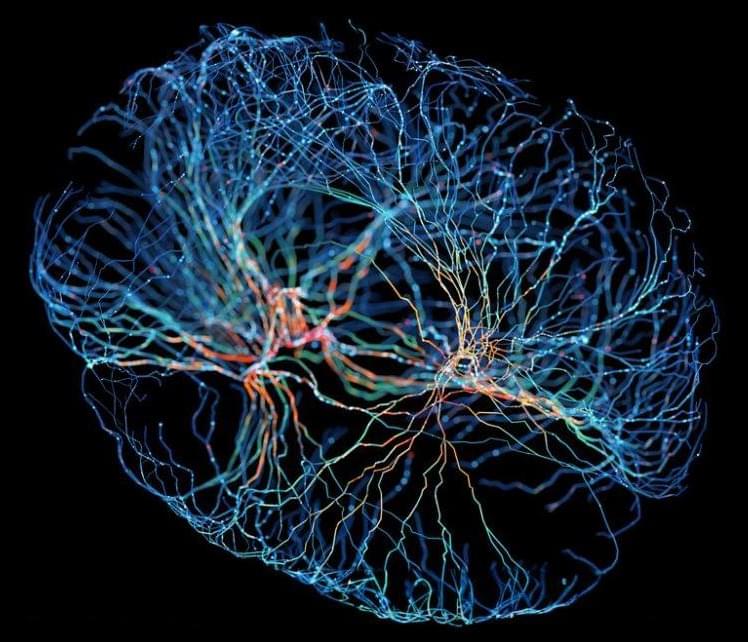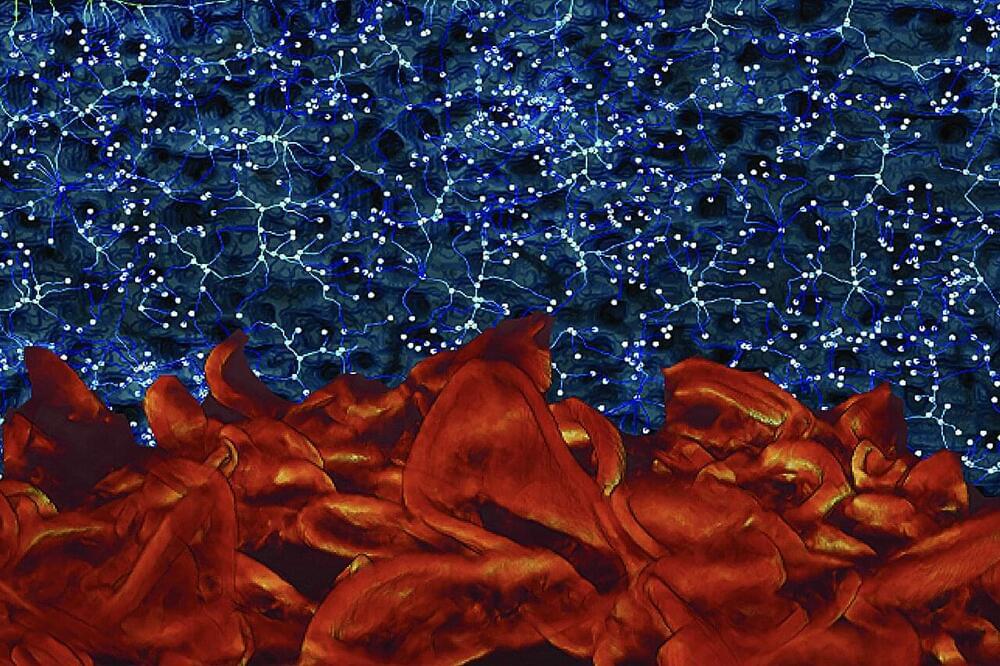Cambridge startup Heartfelt Technologies’ AI telemonitor measures foot volume to monitor discharged heart patients for signs of heart failure.



Neuroscientists have established in recent decades the idea that some of each day’s experiences are converted by the brain into permanent memories during sleep the same night. Now, a new study proposes a mechanism that determines which memories are tagged as Important enough to linger in the brain until sleep makes them permanent.
Led by researchers from NYU Grossman School of Medicine, the study revolves around brain cells called neurons that “fire” – or bring about swings in the balance of their positive and negative charges — to transmit electrical signals that encode memories. Large groups of neurons in the hippocampus fire together in rhythmic cycles, creating sequences of signals within milliseconds of each other that can encode complex information.
Called “sharp wave-ripples,” these “shouts” to the rest of the brain represent the near-simultaneous firing of 15 percent of hippocampal neurons, and are named for the shape they take when their activity is captured by electrodes and recorded on a graph.

A new hypothesis paper appearing in the Journal of Parkinson’s Disease on World Parkinson’s Day unites the brain-and body-first models with some of the likely causes of the disease–environmental toxicants that are either inhaled or ingested.
Pointing to a growing body of research linking environmental exposure to Parkinson’s disease, the authors believe the new models may enable the scientific community to connect specific exposures to specific forms of the disease. This effort will be aided by increasing public awareness of the adverse health effects of many chemicals in our environment. The authors conclude that their hypothesis “may explain many of the mysteries of Parkinson’s disease and open the door toward the ultimate goal–prevention.”
In addition to Parkinson’s, these models of environmental exposure may advance understanding of how toxicants contribute to other brain disorders, including autism in children, ALS in adults, and Alzheimer’s in seniors. Dorsey and his colleagues at the University of Rochester have organized a symposium on the Brain and the Environment in Washington, DC, on May 20 that will examine the role toxicants in our food, water, and air are playing in all these brain diseases.
Additional authors of the hypothesis paper include Briana De Miranda, PhD, with the University of Alabama at Birmingham, and Jacob Horsager, MD, PhD, with Aarhus University Hospital in Denmark.

When you study science, and especially these realms of the biology of what makes us human, what’s clear is that every time you find out something, that brings up ten new questions, and half of those are better questions than you started with.
The artistic masterpiece above, reminiscent of a stained glass window, is the work of Michael Angelo—no, not the famous 16th Century Italian artist, but a 21st Century physician-scientist who’s out to develop a better way of looking at what’s going on inside solid tumors. Called multiplexed ion beam imaging (MIBI), Angelo’s experimental method may someday give clinicians the power to analyze up to 100 different proteins in a single tumor sample.
In this image, Angelo used MIBI to analyze a human breast tumor sample for nine proteins simultaneously—each protein stained with an antibody tagged with a metal reporter. Six of the nine proteins are illustrated here. The subpopulation of cells that are positive for three proteins often used to guide breast cancer treatment (estrogen receptor a, progesterone receptor, Ki-67) have yellow nuclei, while aqua marks the nuclei of another group of cells that’s positive for only two of the proteins (estrogen receptor a, progesterone receptor). In the membrane and cytoplasmic regions of the cell, red indicates actin, blue indicates vimentin, which is a protein associated with highly aggressive tumors, and the green is E-cadherin, which is expressed at lower levels in rapidly growing tumors than in less aggressive ones.

Fascinating vision/plan by the one and only Sam Altman of how to update our economic systems to benefit everyone in the context of rapidly accelerating technological change.
My work at OpenAI reminds me every day about the magnitude of the socioeconomic change that is coming sooner than most people believe. Software that can think and learn will do more and more of the work that people now do. Even more power will shift from labor to capital. If public policy doesn’t adapt accordingly, most people will end up worse off than they are today.
We need to design a system that embraces this technological future and taxes the assets that will make up most of the value in that world–companies and land–in order to fairly distribute some of the coming wealth. Doing so can make the society of the future much less divisive and enable everyone to participate in its gains.
In the next five years, computer programs that can think will read legal documents and give medical advice. In the next decade, they will do assembly-line work and maybe even become companions. And in the decades after that, they will do almost everything, including making new scientific discoveries that will expand our concept of “everything.”


Voids, or empty spaces, exist within matter at all scales, from the astronomical to the microscopic. In a new study, researchers used high-powered microscopy and mathematical theory to unveil nanoscale voids in three dimensions. This advancement is poised to improve the performance of many materials used in the home and in the chemical, energy and medical industries—particularly in the area of filtration.
Magnification of common filters used in the home shows that, while they look like a solid piece of material with uniform holes, they are actually composed of millions of randomly oriented tiny voids that allow small particles to pass through. In some industrial applications, like water and solvent filtration, paper-thin membranes make up the barriers that separate fluids and particles.
“The materials science community has been aware of these randomly oriented nanoscale voids within filter membranes for a while,” said Falon Kalutantirige, a University of Illinois Urbana-Champaign graduate student.

Researchers from the RIKEN Center for Emergent Matter Science and collaborators have developed an organic photovoltaic film that is both waterproof and flexible, allowing a solar cell to be put onto slothes and still function correctly after being rained on or even washed.
One of the potential uses of organic photovoltaics is to create wearable electronics — devices that can be attached to clothing that can monitor medical devices, for example, without requiring battery changes.
However, researchers have found it challenging to achieve waterproofing without the use of extra layers that end up decreasing the flexibility of the film.

St. Jude Children’s Research Hospital scientists reversed an aggressive cancer, reverting malignant cells towards a more normal state. Rhabdoid tumors are an aggressive cancer which is missing a key tumor suppressor protein. Findings showed that with the missing tumor suppressor, deleting or degrading the quality control protein DCAF5 reversed the cancer cell state. These results suggest a new approach to curing cancer — returning cancerous cells to an earlier, more normal state rather than killing cancer cells with toxic therapies — may be possible. The results were published today in Nature.
“Rather than making a toxic event that kills rhabdoid cancer, we were able to reverse the cancer state by returning the cells toward normal,” said senior author Charles W.M. Roberts, MD, PhD, Executive Vice President and St. Jude Comprehensive Cancer Center director. “This approach would be ideal, especially if this paradigm could also be applied to other cancers.”
“We found a dependency which actually reverses the cancer state,” said first author Sandi Radko-Juettner, PhD, a former St. Jude Graduate School of Biomedical Sciences student, now a Research Program Manager for the Hematological Malignancies Program at St. Jude. “Standard cancer therapies work by causing toxicities that also damage healthy cells in the body. Here, it appears that we’re instead fixing the problem caused by the loss of a tumor suppressor in this rhabdoid cancer.”
